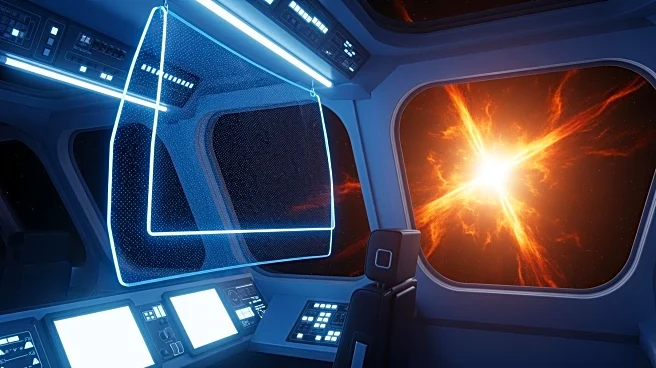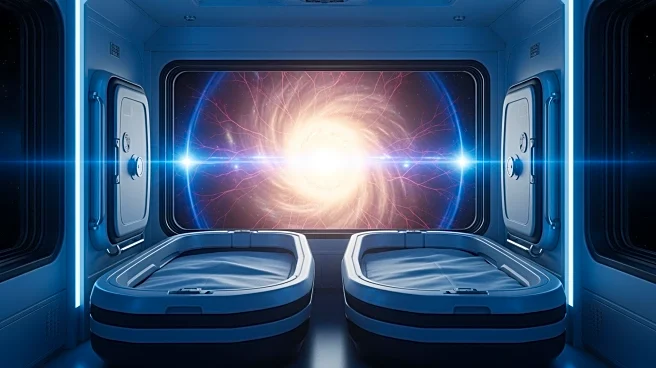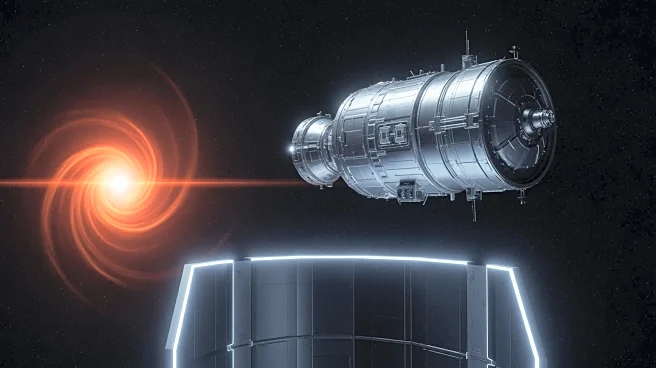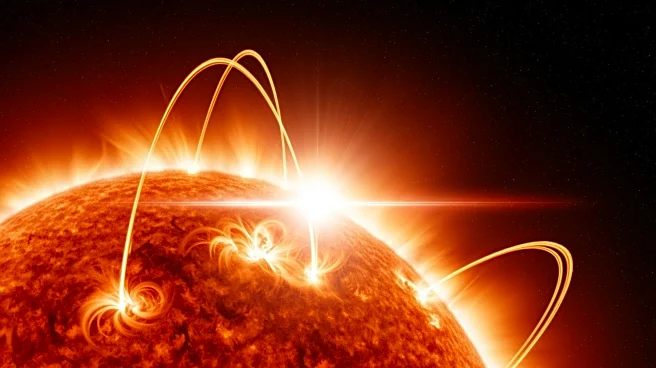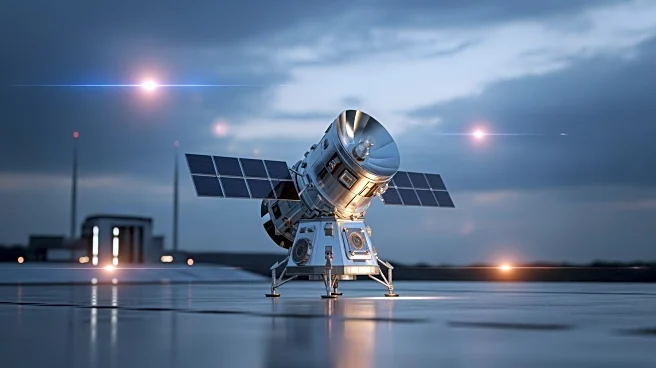What's Happening?
A recent solar storm has forced astronauts aboard the International Space Station (ISS) to take shelter due to heightened radiation risks. The storm, caused by coronal mass ejections from sunspot group
AR4274, led to the relocation of Russian cosmonauts to the station's laboratory module for added protection. Meanwhile, NASA and JAXA astronauts remained in their designated sleeping quarters. The solar storm also produced stunning auroras visible across the Northern Hemisphere, showcasing the dual nature of space weather as both a visual spectacle and a potential hazard.
Why It's Important?
The event underscores the challenges of human space exploration, particularly the need for effective radiation protection measures. As space agencies plan more ambitious missions, understanding and mitigating the risks posed by solar storms becomes crucial. The incident highlights the importance of monitoring solar activity and developing protocols to ensure astronaut safety. The increased frequency of solar storms during the current solar cycle may necessitate enhanced preparedness for future missions.
What's Next?
Space agencies will continue to monitor solar activity closely, using tools like the Solar and Heliospheric Observatory to predict potential storms. Future missions, including lunar and Martian expeditions, will need to incorporate strategies for dealing with solar weather. The ISS crew's experience may inform safety protocols for upcoming space exploration endeavors.
Beyond the Headlines
The solar storm serves as a reminder of the delicate balance between the beauty and danger of space phenomena. While auroras offer a visual treat, the accompanying radiation poses significant risks to astronauts, highlighting the need for ongoing research into space weather impacts.


